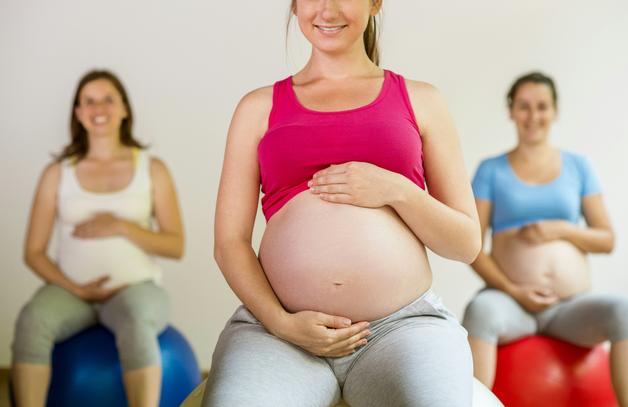Every pregnancy is accompanied by its own symphony of sensations—some gentle, some unexpectedly intense. You might find yourself shifting in bed as a persistent ache tugs at your lower back, or pausing mid-step when a sharp twinge darts through your hips. Pregnancy aches have a way of inserting themselves into the everyday routine—sometimes with a whisper, other times with a roar. For many parents-to-be, the uncertainty of these changing feelings prompts questions: What are these aches, why do they happen, and most importantly—are they normal? Could pain signal something more serious, or simply the poetry of a body adapting so rapidly? From fleeting tingling in the extremities to the deep, dull pull in the pelvis or the unmistakable grip of a leg cramp at 3 a.m., deciphering these signals matters deeply. Ahead: a scientific dive into pregnancy aches, practical insights for daily relief, key warning signs every parent should know, and a toolkit for navigating this transforming journey with confidence.
Understanding Pregnancy Aches: What’s Happening in Your Body?
Pregnancy orchestrates a dramatic internal shift. The surge in hormonal changes—relaxin and progesterone take center stage—allows ligaments to soften, preparing the body for delivery. Yet, this remarkable flexibility can also render joints unstable and muscles more susceptible to minor injuries or discomfort. Muscle soreness, low back pain, and a sensation of overall stiffness enter the scene for many, while delicate changes in circulation and posture add another layer of complexity. The uterus, ever-expanding, demands real estate and shifts your center of gravity, prompting the core muscles to work overtime. The result: the ubiquitous pregnancy aches experienced in waves or as persistent companions. Some may breeze through with only episodic discomfort, while others feel the echoes in nearly every joint and muscle.
Types of Pregnancy Aches: How Do They Manifest?
Back Pain, Pelvic Discomfort, and Sciatic Twinges
Almost a rite of passage—lower back pain becomes familiar as gestation progresses. For some, this means a dull ache that grows sharper with each movement; for others, sciatic nerve irritation sends electric jolts down the legs. Pelvic and hip pain, sometimes labeled as round ligament pain, might startle you with their sudden, stabbing intensity, especially when shifting positions quickly.
Muscle Fatigue and Cramps
Ever been awoken by a sudden, gripping calf cramp? This is a signature experience for many. Muscle fatigue—in the calves, hips, lower back—stems from not just the shifting skeleton, but also possible drops in magnesium or calcium levels. Restless leg sensations and a general heaviness may linger after prolonged standing or even a relatively still day.
Joint Soreness, Swelling, and Carpal Tunnel
Swelling hands and feet? Pregnancy’s natural increase in fluid can cause subtle nerve compression, leading to tingling, numbness, and joint pain (especially in the wrists—carpal tunnel syndrome). Shoulders and neck can accumulate tension by day’s end, as posture adapts under the growing weight in front.
Gastrointestinal Aches and Vascular Discomforts
Digestive shifts, driven by slowed movement through the intestines (courtesy of progesterone), frequently produce bloating, heartburn, and even constipation. Lower limbs may complain with itching, swelling, or visible varicosities—testaments to altered blood flow and increased venous pressure.
Less Common (But Notable) Sensations
Tingling in the hands, burning in the toes, or a peculiar tightness in the belly—these, too, stamp their mark on the vast terrain of pregnancy aches.
The Science Behind Pregnancy Aches: Root Causes Demystified
- Hormonal effects: Relaxin, necessary for labor, stretches connective tissue far before it’s needed. This can destabilize joints and encourage muscle overload.
- Weight and posture: As body mass rises and the abdomen swells, the spine curves forward. Core and back muscles endure new, sustained strains.
- Mineral imbalances: Electrolyte deficiencies, especially magnesium and calcium, magnify vulnerability to cramps and muscular discomfort.
- Activity levels: A sudden burst of movement after a sedentary period (or the reverse) can set muscles on edge. Aching after immobility is a frequent refrain.
- Interrupted sleep: As nights become restless—thanks to hormonal surges, physical discomfort, or anxiety—muscles fail to recover, amplifying daytime aches.
- Fluid shifts: Increased water retention compresses nerve pathways and adds to swelling, contributing to pregnancy aches felt as numbness or heaviness.
How to Describe and Recognize Pregnancy Aches—And When to Seek Help
The majority of pregnancy aches settle into familiar patterns: dull, low-grade soreness in the lumbar spine, intermittent sharp pains in the pelvis, generalized muscle fatigue accosting the legs, or persistent headaches as our body diligently recalibrates. Yet, certain red flags emerge—warning signals that demand prompt professional attention:
- Severe, unrelenting pain in any region
- New limb swelling, redness, or warmth (think of the possibility of a blood clot—deep vein thrombosis)
- Headache accompanied by blurred vision, swelling, or high blood pressure
- Recurrent uterine contractions or tightening
- Unexplained fever, abnormal vaginal bleeding, or sudden neurological symptoms
Listening to your body’s shifts is an act of wisdom—a form of early detection that safeguards both parent and baby.
Pregnancy Aches Across Trimesters: What Changes—and Why?
First Trimester: Hormones introduce muscle tension and cramping—often mistaken for menstrual symptoms. Breast tenderness and headaches are frequent guests as the body recalibrates.
Second Trimester: As the womb stretches, connective tissue tension increases. Round ligament pain, back aches, and the onset of swelling or tingling in the wrists become more prominent.
Third Trimester: Pelvic pressure and sciatica reach new heights. Leg cramps and swelling disrupt sleep, making nights turbulent. Extreme or sudden swelling can raise concerns about conditions like preeclampsia.
Postpartum: Recovery brings its own landscape: uterine afterpains, lingering backaches, breast engorgement, and a return to more regular (but sometimes still sore) muscle use. Emotional shifts interplay, sometimes amplifying physical sensations.
Evidence-Based Strategies for Easing Pregnancy Aches
What can parents do to invite comfort—and push back against the pull of pregnancy aches?
- Gentle stretching: Strategic, light stretching energizes tired muscles and prevents micro-injuries (especially effective in mornings and before sleep).
- Prenatal yoga and aquatic exercise: Activities tailored for pregnancy boost flexibility without burdening joints.
- Swimming and walking: Water buoyancy relieves musculoskeletal strain; regular, gentle walking keeps circulation robust.
- Warm baths and compresses: Localized heat therapy dilates blood vessels, relaxing muscle fibers and soothing sensitive spots.
- Restful positioning: Sleeping on the side, pillow between knees, minimizes pelvic pressure. Regular positional changes throughout the day ward off stiffness.
- Professional massage: Targeted prenatal massage eases tension and boosts circulation—just ensure the practitioner is certified in pregnancy-safe techniques.
- Supportive accessories: Support belts, orthopedic footwear, and lumbar cushions provide structural support to overstressed regions.
- Balanced nutrition & hydration: Prioritizing magnesium- and calcium-rich foods—nuts, seeds, leafy greens, dairy—alongside adequate water intake can preempt many cramps.
- Physical therapy: Customized routines strengthen deep core muscles and address biomechanical imbalances.
- Medication: Acetaminophen is generally accepted for mild analgesia, but always consult the medical provider first. Avoid non-steroidal anti-inflammatory drugs unless specifically recommended by a specialist.
Preventive Habits: Shaping a More Comfortable Pregnancy
- Posture awareness: Set up your everyday environment—desk height, chair support, sleeping arrangements—to foster neutral spinal alignment.
- Frequent, gentle movement: Short bursts of activity throughout the day encourage healthy blood flow and muscle resilience.
- Proper lifting techniques: Bend at the knees, not the waist, and distribute weight evenly to shield your back.
- Nutrient support: Incorporate crucial micronutrients into your diet and maintain regular hydration to support tissue health.
- Intentional rest: Build in pauses, naps, and calming practices such as mindful breathing.
- Self-observation: Adapt your routine as needed. Listen for subtle cues—if an activity triggers pregnancy aches, modify or discontinue temporarily.
When are Pregnancy Aches a Signal to Seek Medical Advice?
Stay vigilant for:
- Sudden, escalating pain (especially in the abdomen, pelvis, chest, or legs)
- Bleeding or abnormal vaginal discharge
- Regular, painful uterine contractions
- High, persistent fever or chills
- Rapid onset of facial, hand, or leg swelling
- New, localized redness, pain, or heat—particularly in the lower limbs
- Neurological symptoms (numbness, persistent weakness, or confusion)
- Shortness of breath or chest discomfort
Timely medical input is invaluable to exclude serious underlying conditions and ensure maternal and fetal safety.
Specific Medical Conditions Underlying Pregnancy Aches: Understanding the Risks
- Preeclampsia: Characterized by hypertension, headaches, upper abdominal pain, and significant swelling. This demands rapid assessment.
- Sciatica: Radiating pain down the leg as the uterus compresses the sciatic nerve; sometimes intermittent, sometimes unrelenting.
- Osteitis pubis: Inflammation where the pelvic bones meet, resulting from excessive joint relaxation.
- Carpal tunnel syndrome: Tingling, pain, or numbness from compression of the median nerve at the wrist—often transient but frustrating.
- Hemorrhoids and varicosities: Swollen veins can produce muted, throbbing discomfort—especially later in pregnancy.
- Urinary tract or kidney infection: New low back or flank pain warrants medical investigation, as infections may progress more rapidly during pregnancy.
Emotional and Cognitive Impact: Navigating the Mind-Body Connection
Physical soreness doesn’t exist in a vacuum. Persistent muscle discomfort can shadow mood, enhance stress, or dull energy reserves. Gentle movement, relaxation techniques, and supportive conversations (with professionals or trusted relatives) can help balance both body and mind. Prioritizing wellbeing—physical and emotional—lays a strong foundation for this transformative chapter.
Key Takeaways
- Pregnancy aches intertwine hormonal, physical, and emotional factors, with symptoms shifting throughout pregnancy and into the postpartum period.
- Most discomfort is self-limited and responds well to evidence-based, gentle interventions: stretching, swimming, supportive gear, a nutrient-rich diet, and attention to posture.
- Early recognition of warning signs—persistent pain, unusual swelling, fever, neurological symptoms—should prompt professional evaluation.
- Medical and therapeutic resources exist for guidance, reassurance, and tailored care: empower yourself to reach out.
- Find personalized support and free child health questionnaires in the Heloa app—a practical ally for parents navigating these pivotal months.
Understanding and responding to pregnancy aches is not simply about symptom management, but about embracing the ongoing, adaptive dialogue between your body and the new life it is supporting.
Questions Parents Ask
Are flu-like body aches normal during pregnancy?
Experiencing body aches that might feel similar to those you would get during a mild flu is actually quite common in pregnancy, particularly during the early and late months. These sensations are generally related to your body’s adaptation to hormonal fluctuations and the increased workload on muscles and joints. While some discomfort can be a normal part of the pregnancy journey, always pay attention to additional signs—such as fever or severe fatigue—that could suggest an infection. If in doubt or if new symptoms appear, don’t hesitate to reach out to your care team for extra reassurance.
Why do I feel whole body aches in early pregnancy?
Whole body aches in early pregnancy often stem from the rapid hormonal changes and your body’s preparations to support your growing baby. It’s especially typical to notice sensations similar to menstrual cramps or a general sense of physical fatigue. Your muscles and ligaments are adjusting early on, which may feel unfamiliar. Rassurez-vous—these aches are part of the process for many, but if the discomfort becomes persistent or is accompanied by other unusual symptoms, it is wise to consult a healthcare professional.
Is lower belly pain common in the first trimester?
Mild lower belly pain, sometimes resembling period cramps, often appears in the first weeks of pregnancy and is usually linked to hormonal shifts and early changes in the uterus. This type of discomfort, although unsettling at times, is generally considered normal and tends to come and go. In most cases, gentle rest and hydration help to bring relief. However, persistent pain, especially if it’s intense or paired with other symptoms like bleeding, deserves prompt medical attention for peace of mind.

Further reading:







